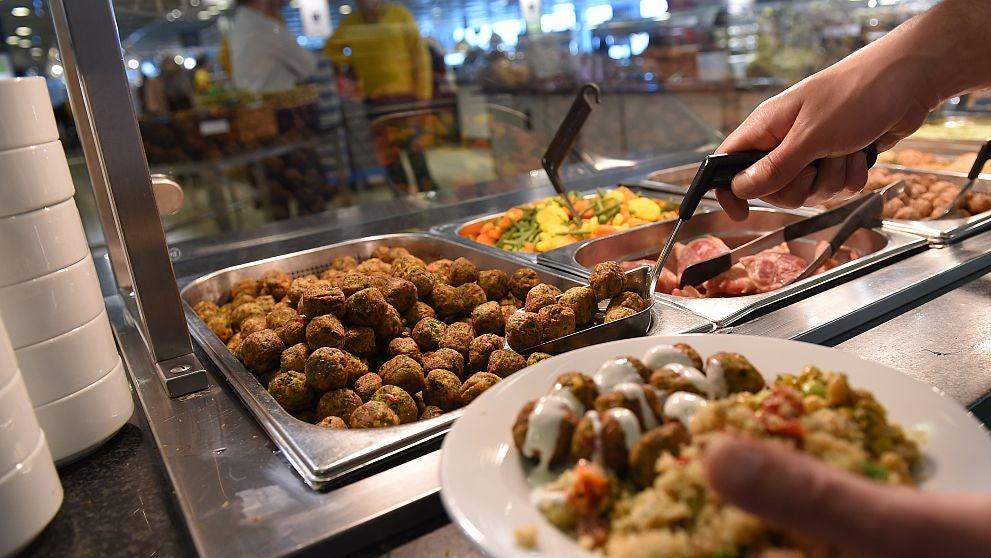How IKEA Uses Food To Get You To Spend More
If you feed them, they will come. Here's how the big box store thinks about food.
Step inside any IKEA store and you'll immediately feel your senses waking up. That long drive you made from your home miles and miles away now feels worth it as you begin to navigate IKEA "showrooms," blocks of space that each feature a well-staged array of furniture and products. You'll pass by other shoppers flopping on comfy beds with pristine duvet covers and discussing kitchen renovation plans. Toward the end of the loop, you'll reach IKEA's in-store restaurant, where I worked for nearly a year.
My local newspaper, the Oregonian, reported that the Portland IKEA opened in the spring of 2007. By the summer of 2010, I was working in the restaurant and downstairs food court, serving up hot dogs and meatballs to queues of hungry customers. The restaurant was very busy, especially during the summer. Every weekend, lines would form for breakfast before it opened, and the rush would continue all throughout the day.
To make the shopping experience even more appealing, IKEA implemented a new marketing strategy that summer: Go eat at the IKEA restaurant and you'll receive a coupon for the amount you spent on food, redeemable for a discount at the checkout line. For example, if your family spent $40 on lunch, you'd receive $40 off your purchase of IKEA merchandise. The more you ate, the less your new bookshelf would cost. And for anyone looking to invest in some furniture and and home décor, that might just add up to an attractive discount.
IKEA incentivizes food purchases
It was a brilliant marketing campaign, so brilliant that it was hard to pass up for many shoppers. Indeed, many of them would drive from far away in their trucks and vans, entire families in tow. IKEA isn't ubiquitous like Walmart, and that was even more true in 2010; thus, interested customers from all across Oregon and the southern region of Washington had to come to the Portland location to shop. They did.
Perhaps it was this signature location-specific exclusivity that made IKEA feel like a unique brand, one whose in-store experience was worth the trip. That summer, I witnessed many families, as well as young couples, stop by the IKEA restaurant to eat, many pleasantly surprised by how affordable the food was. As a result of that perception, they spent more money on food overall, and walked away with full bellies before they finished their shopping trip—meaning they could continue shopping as long as they wanted without feeling the need to leave and grab lunch.
All in all, the customers seemed genuinely satisfied. They felt like they got a deal out of it. And indeed, it is a deal, but like most popular promotions, it was one from which the company profited immensely. I remember during our town-hall-style meetings in the employee breakroom, the managers would share sales numbers, which were always beyond their projections.
Food will always be part of the IKEA business model
At most IKEA locations, you'll also see a special play area for children called Småland, where kids can enjoy supervised play while their parents shop. And if there isn't any space for their kids, where else can families go to placate them but the restaurant? IKEA understands the value of offering services that extend the duration of each shopper's trip.
The company managed to surpass its sales forecast that summer in 2010. The food discount promotion would last for several more years, long after I left.
Recently, when I returned to the restaurant and spoke with an employee about the promotion, I was informed that it was no longer in place. The pandemic usurped many live events, and companies like IKEA are going through the same supply chain issues that many other retailers are going through, so it may be a while before a similar food promotion happens again. Until then, the summer of 2010 remains a fond memory for me, and surely for many shoppers who roamed the showrooms that year.
